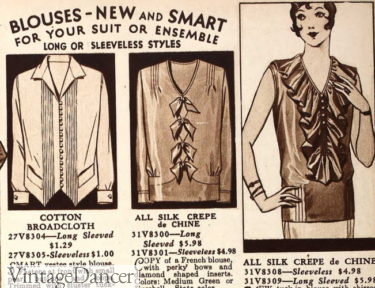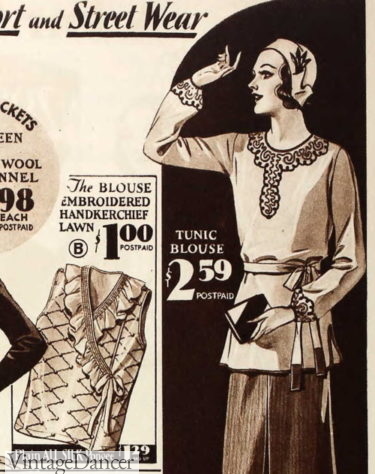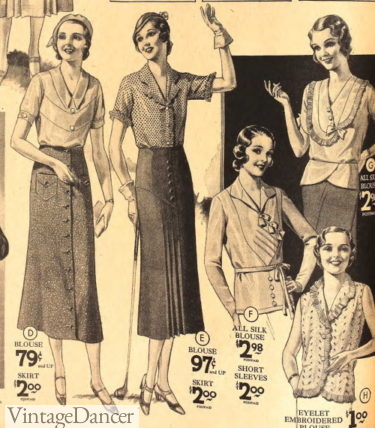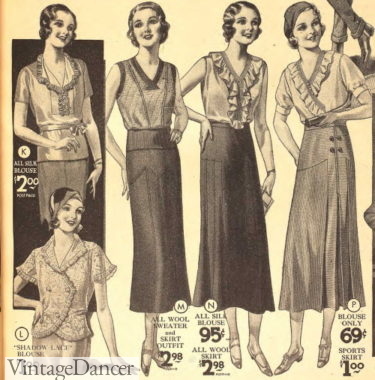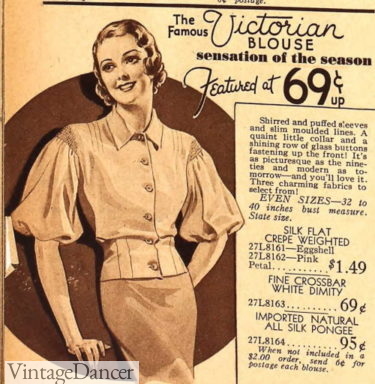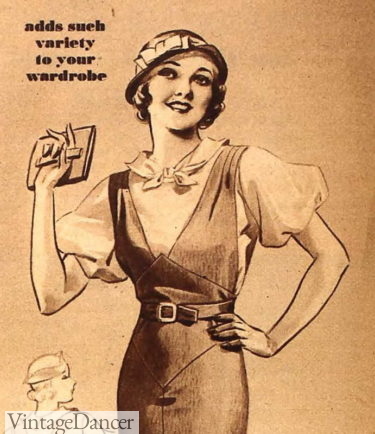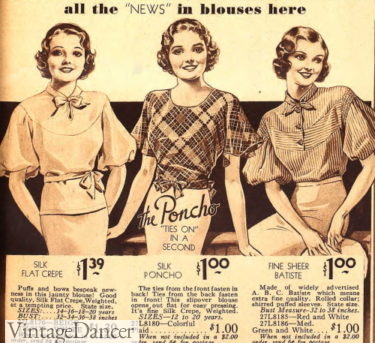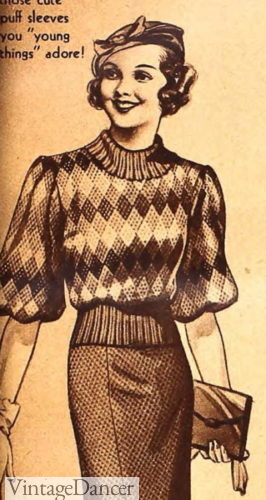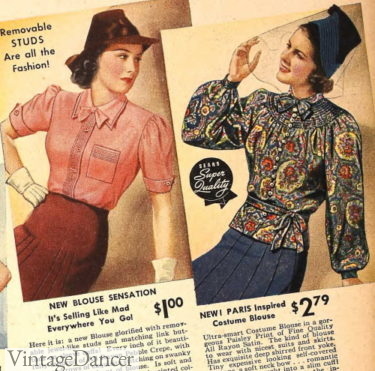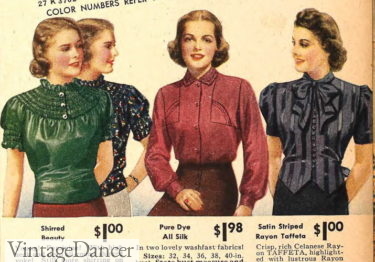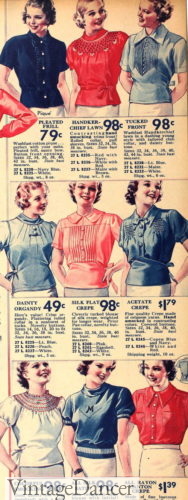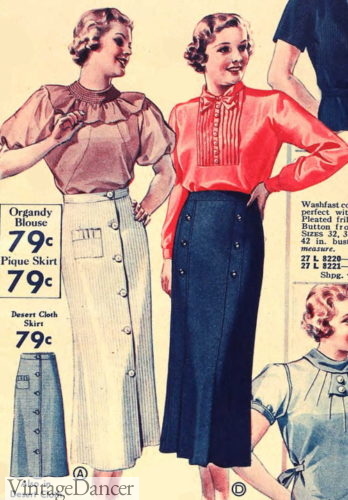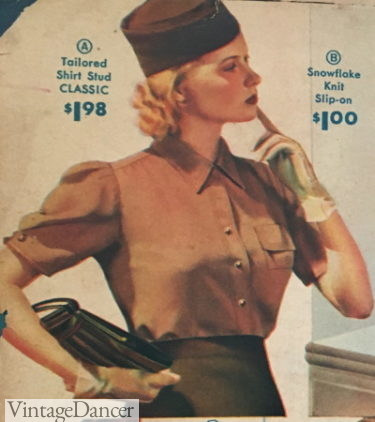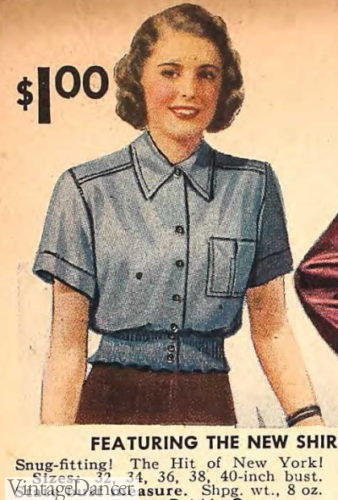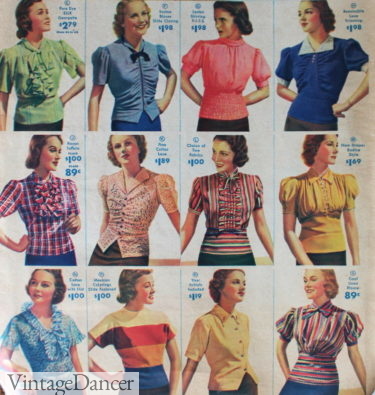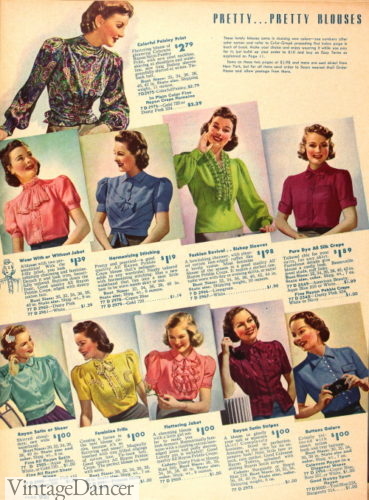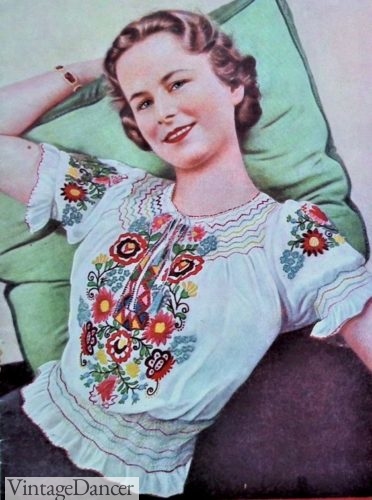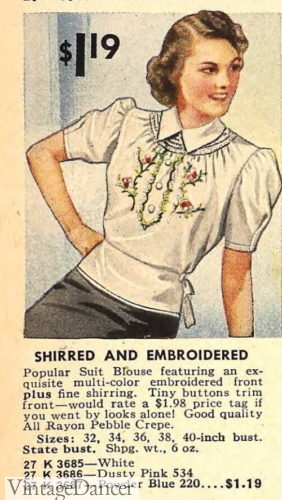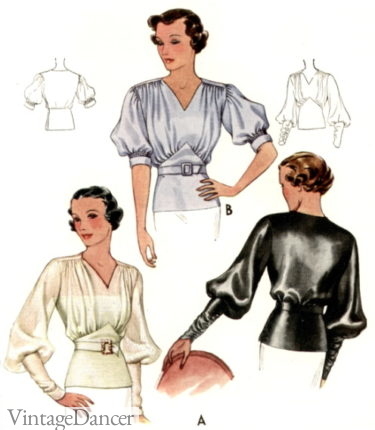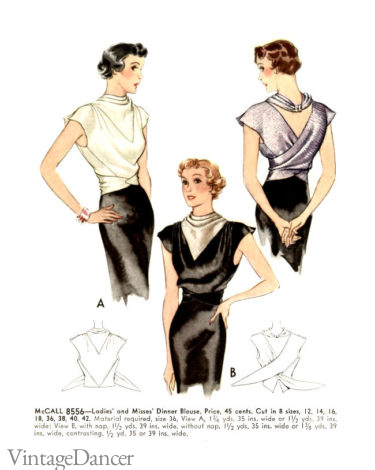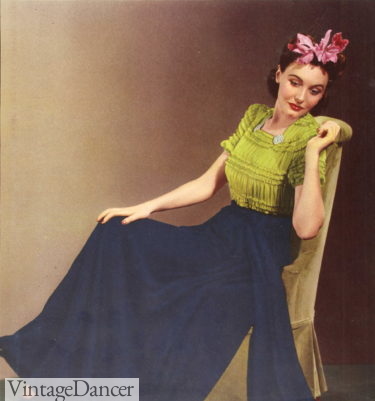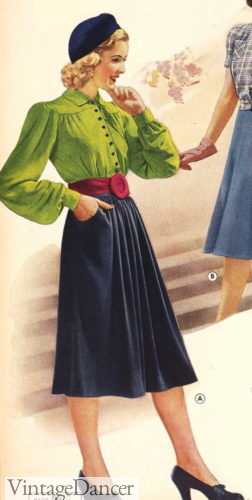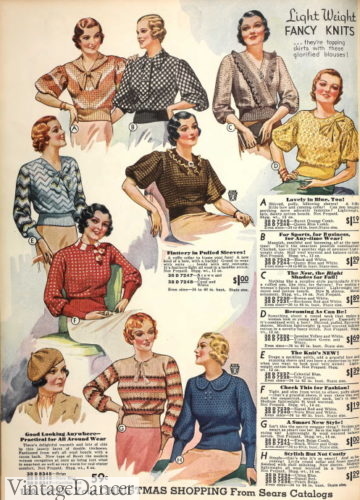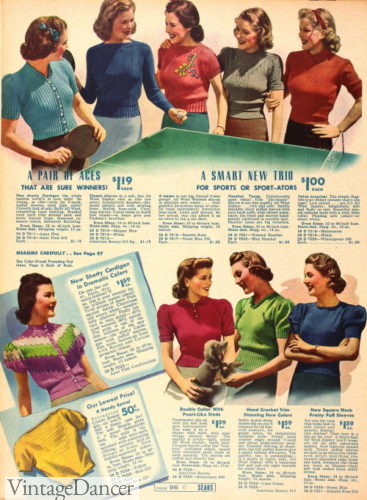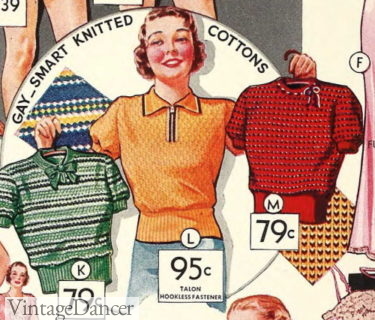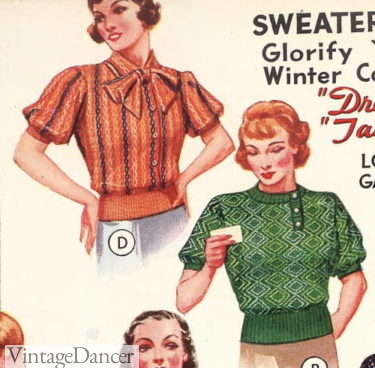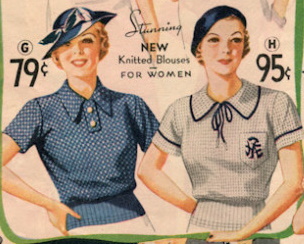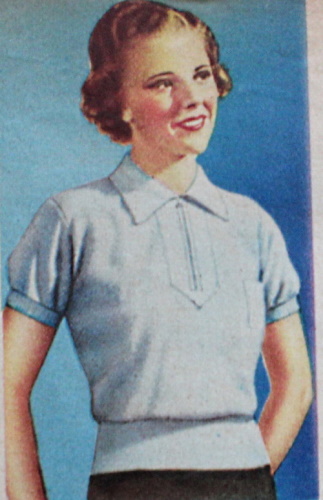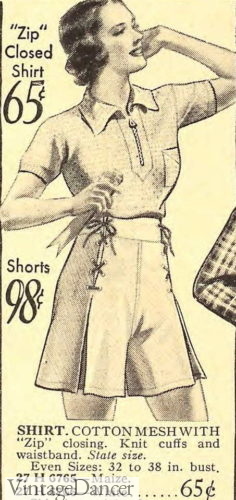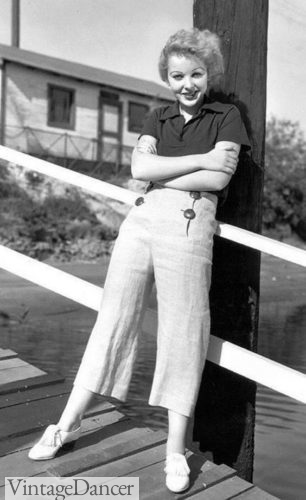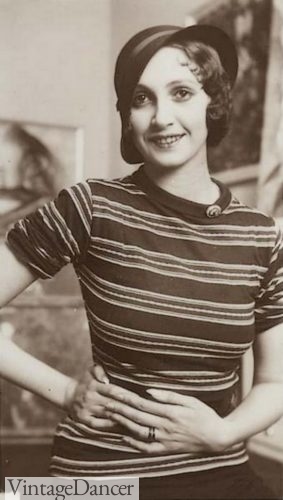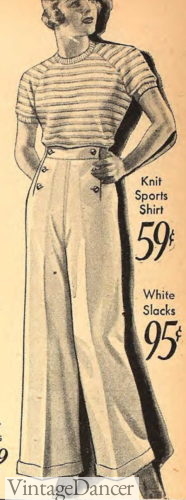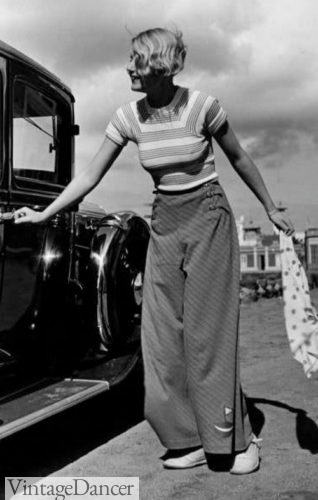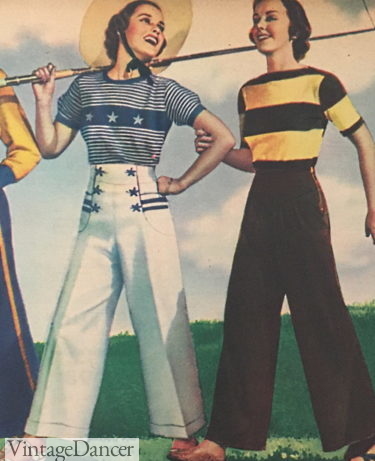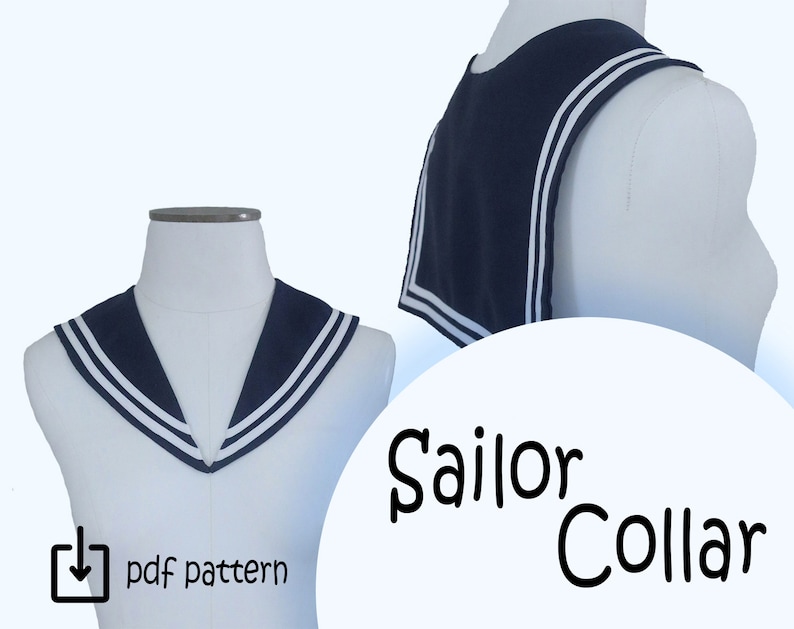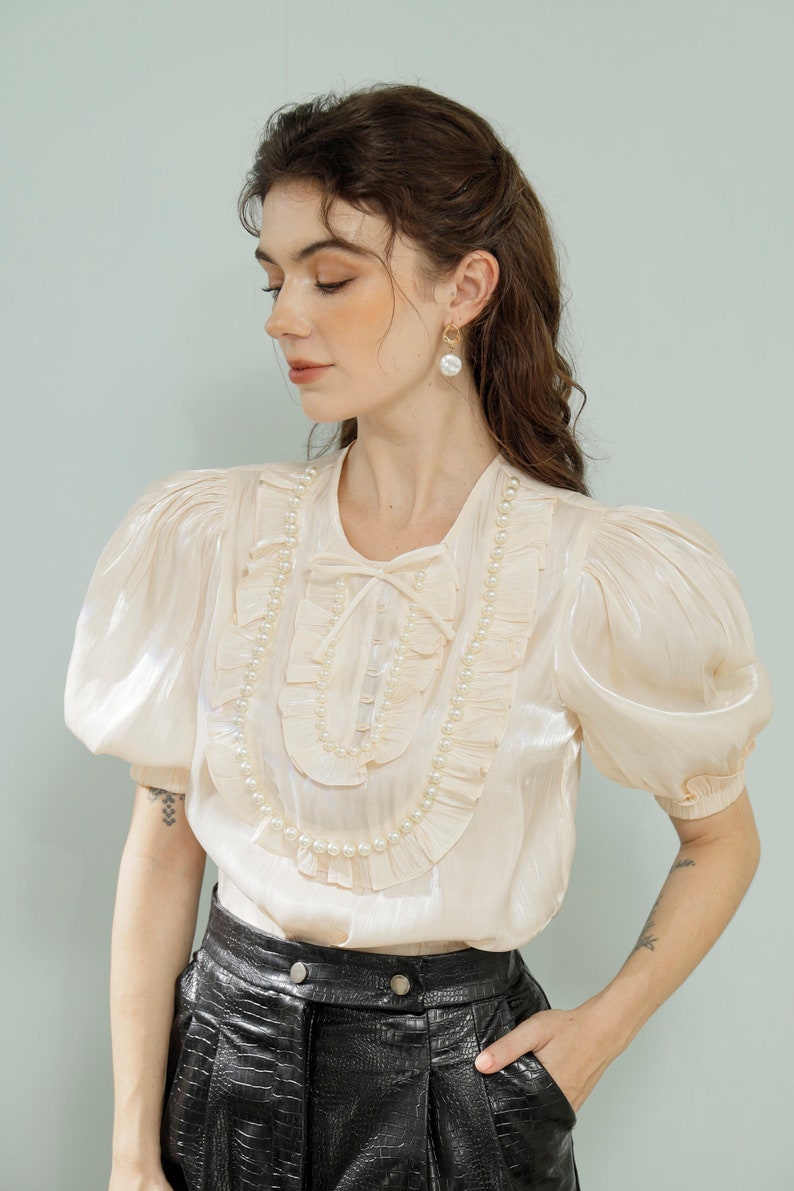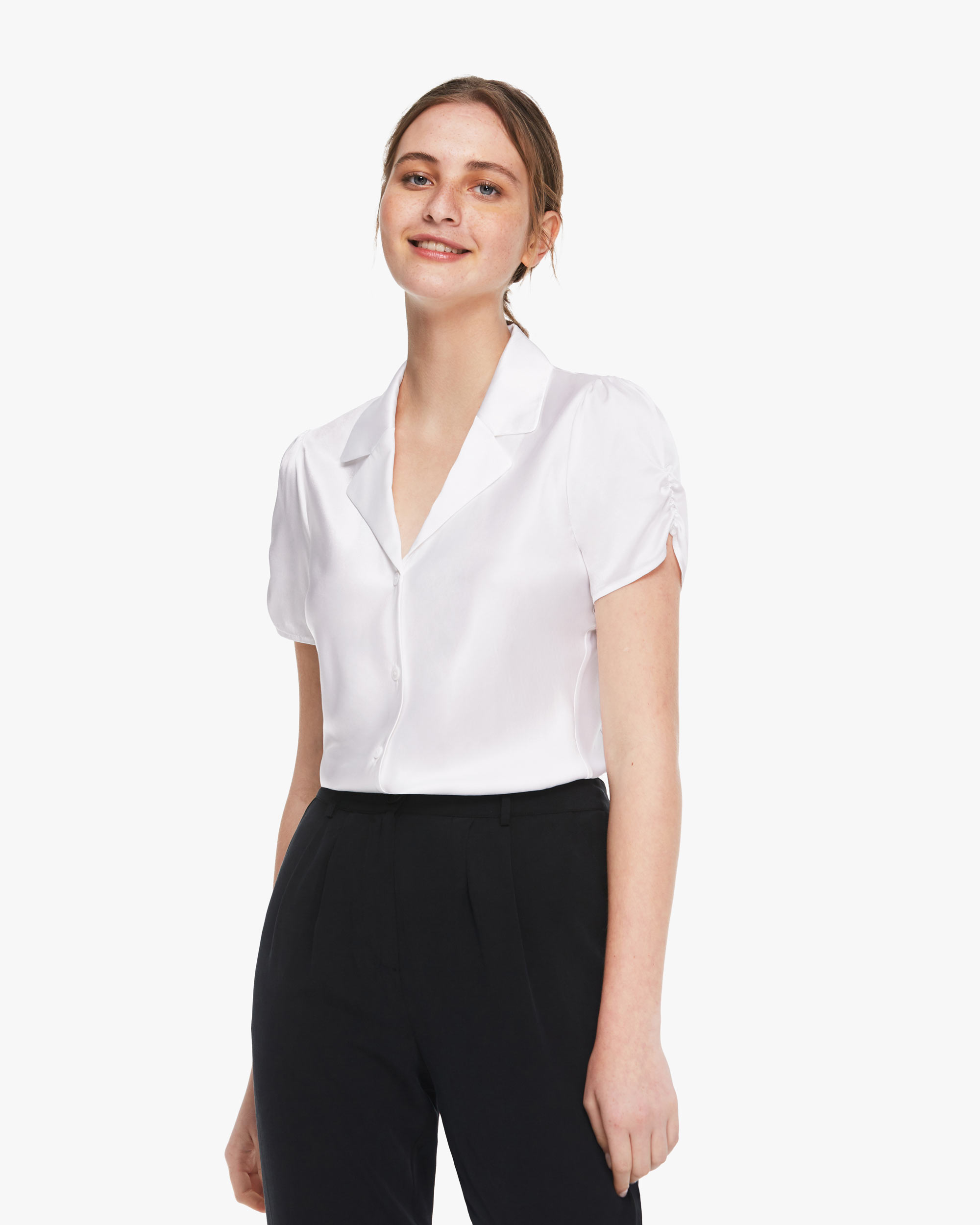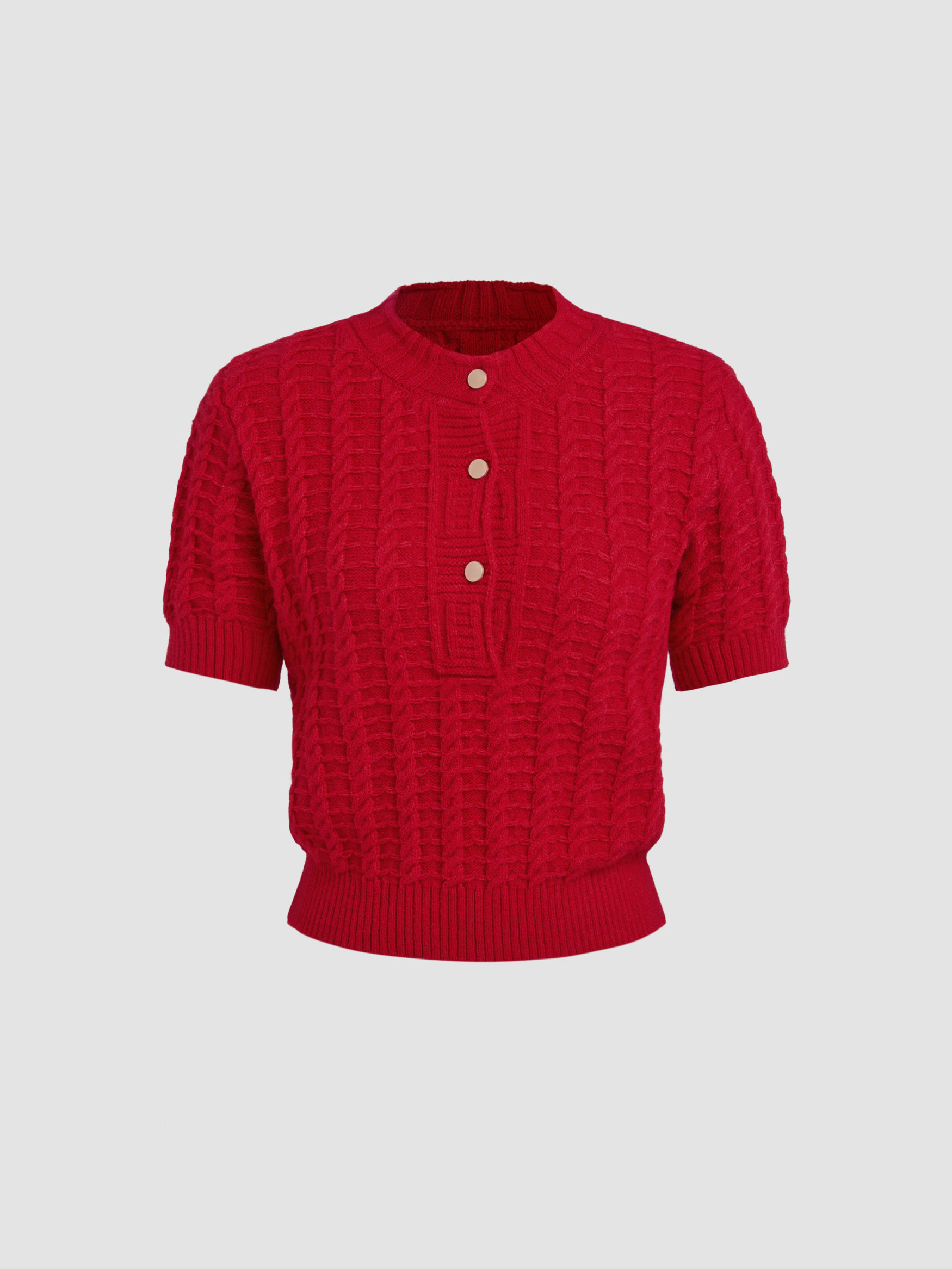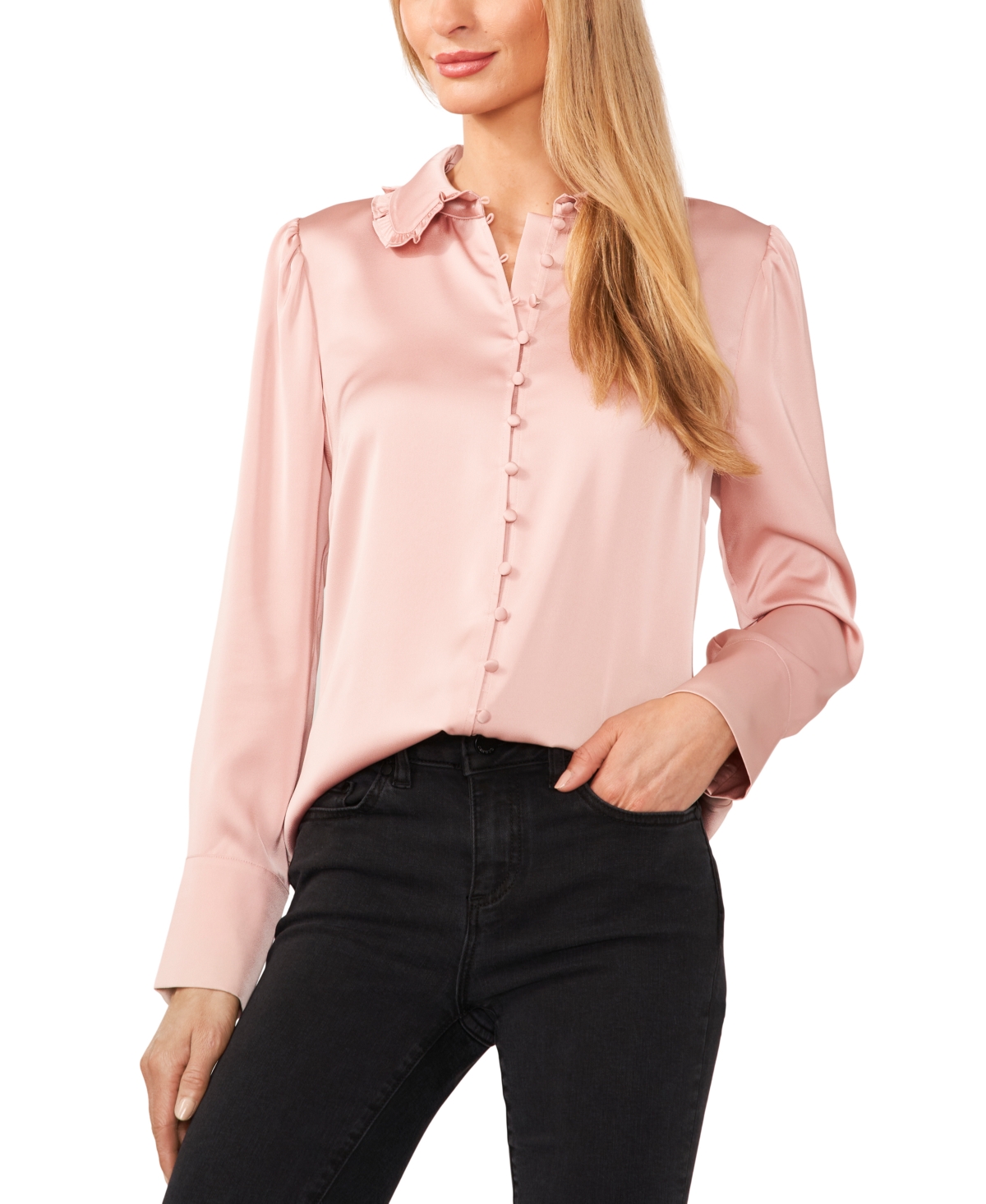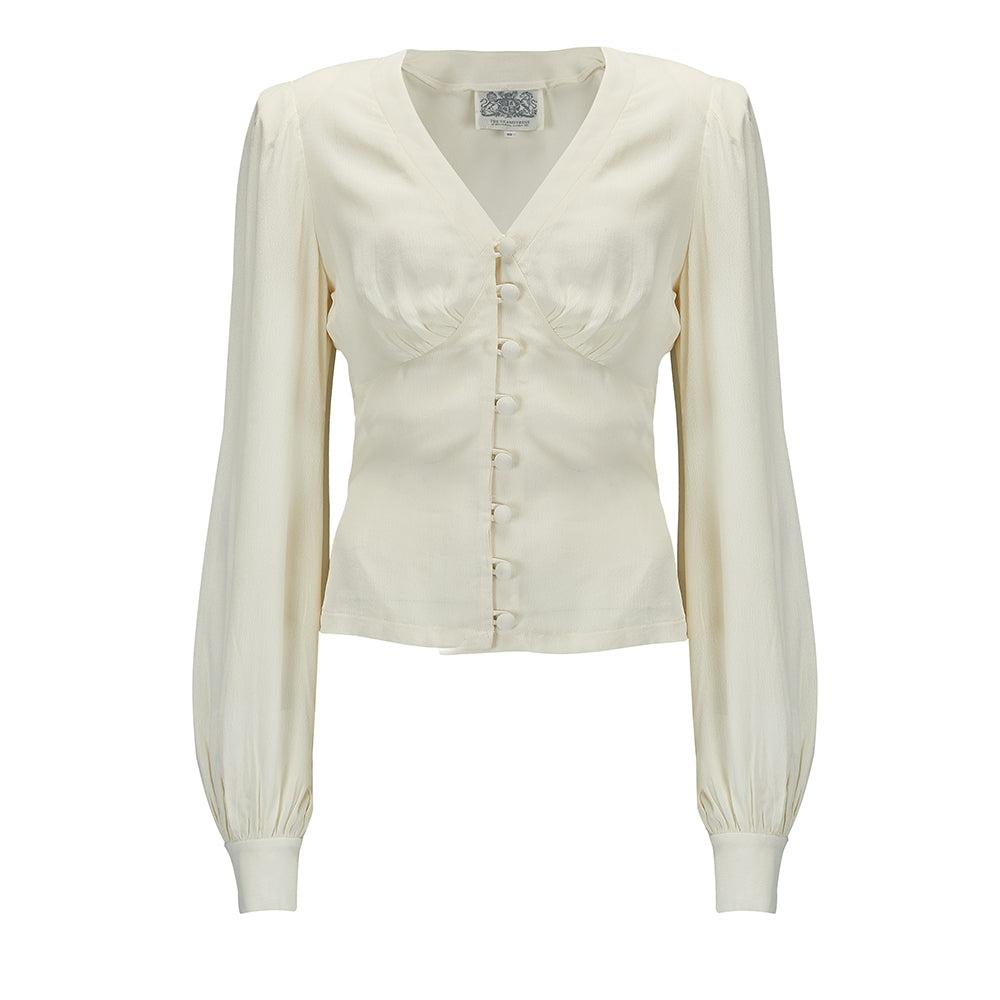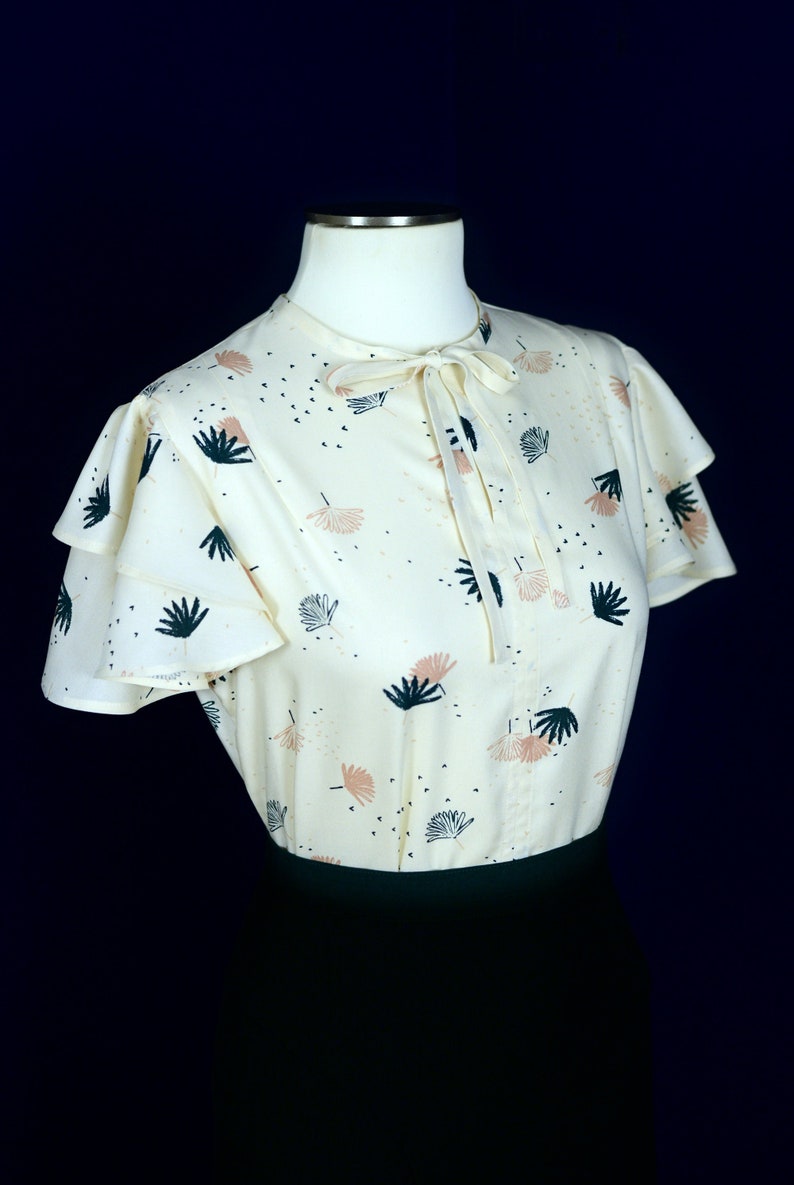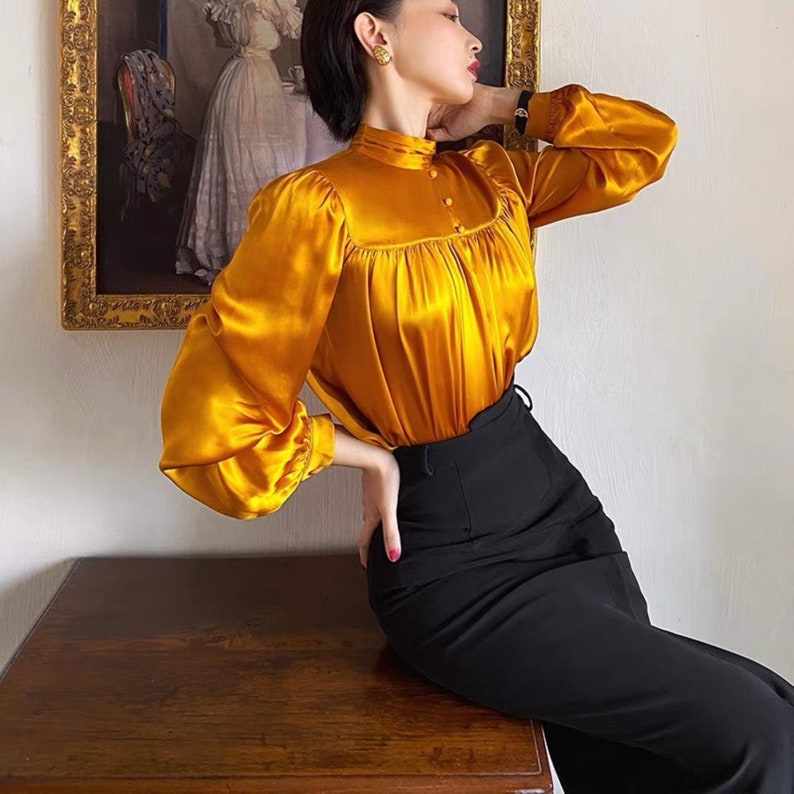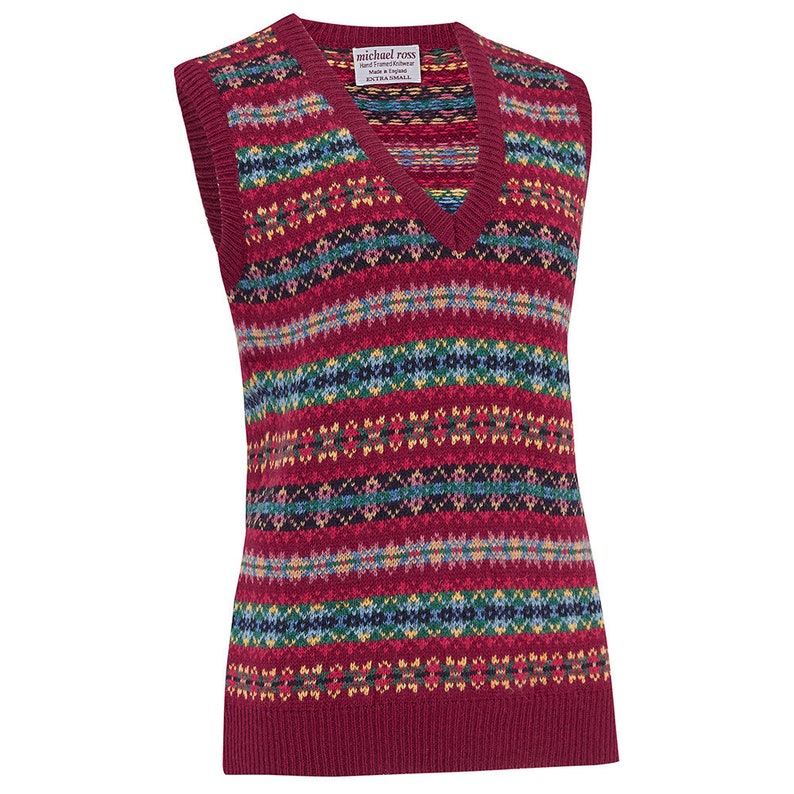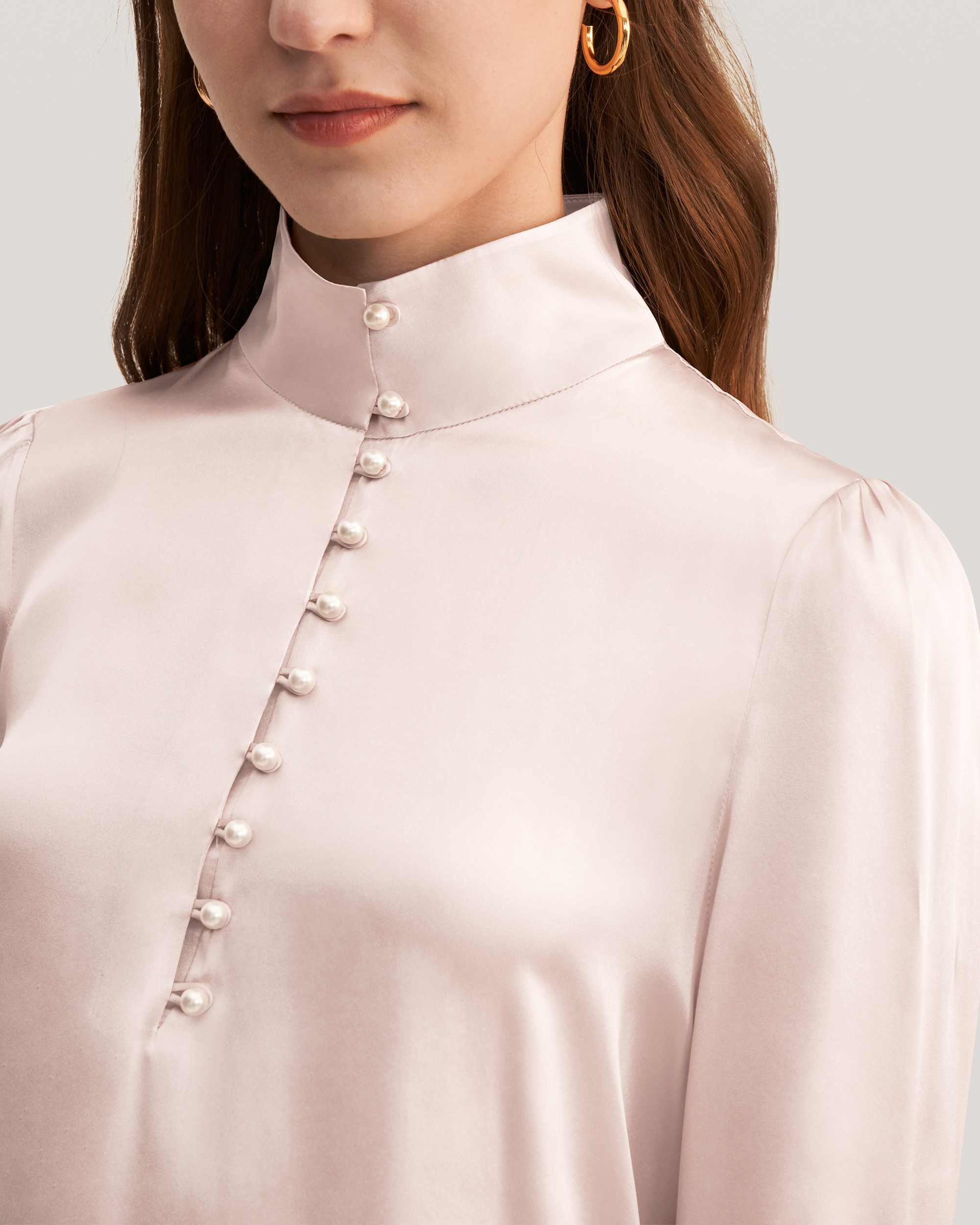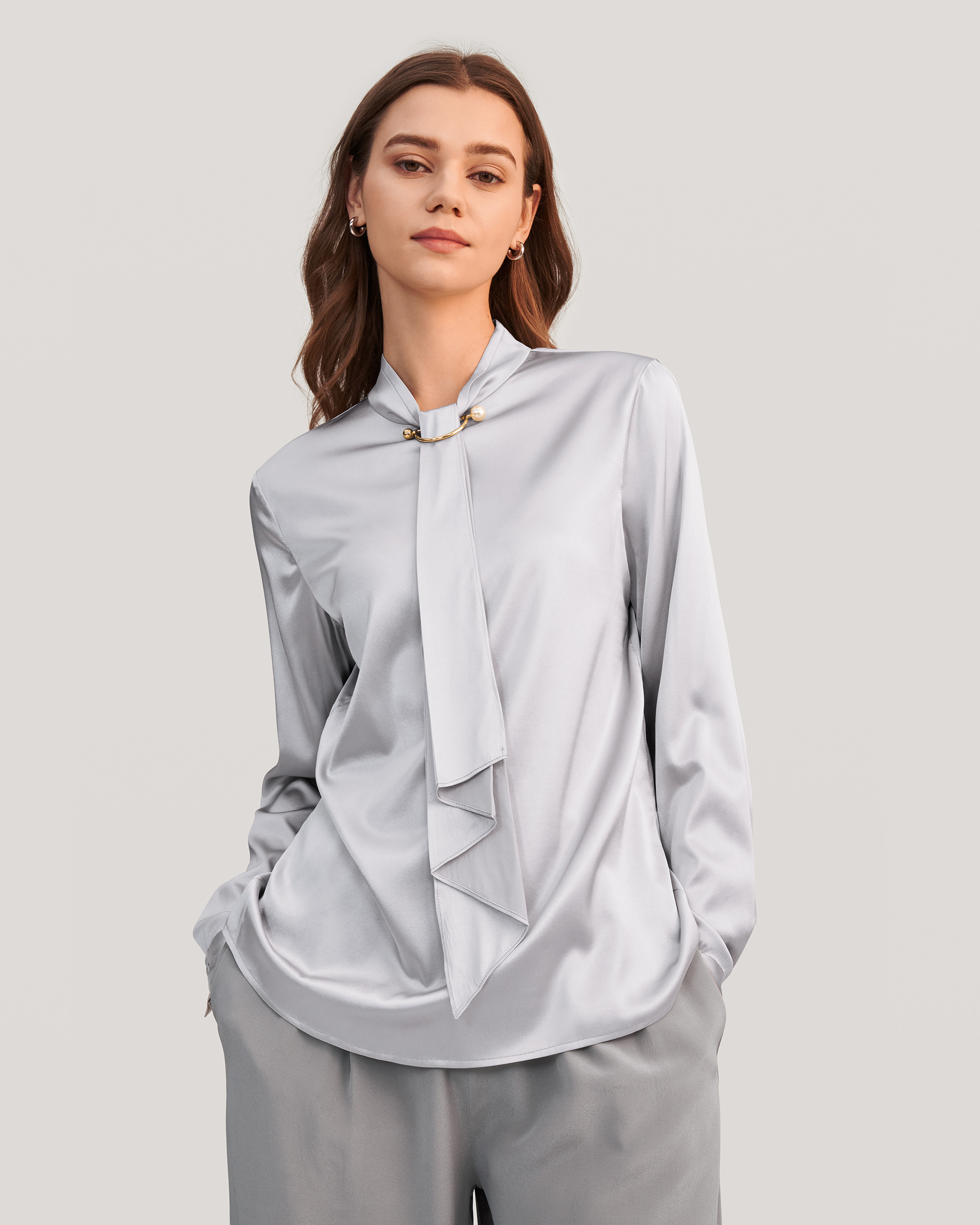Starting in the mid 1920s, women’s separates (skirts and blouses) lost favor to the one piece dress. This continued into the early 1930s, until the tides changed once again and women found the mix-and-match convenience of 1930s blouses and skirts both economical and pretty.
Blouse styles were overly fussy, reflecting the Victorian era with ruffles, shirring, bows, pleats, and buttons adding drama to the neckline and sleeves. For sporty casual looks, the knit polo shirt and sweater-blouse came into fashion, following menswear trends and worn with shorts and pants.
Sport Blouses – Early 1930s
As mentioned above, the early 30s lacked much interest in blouses. What did exist were labeled as sportswear (meaning casual) and were quite simple in design. A button-down blouse and middy blouse (sailor tie) were carryover styles from the late 1920s. New styles were the tunic blouse, a long hip-length slip-over blouse with a tie belt, and the sleeveless blouse embellished with ruffles.
- 1930 Sport Blouses – Button Down, Bowties, and Ruffled Sleeveless
- 1931 Tunic Blouses
The wrapover blouse was another new design that could be found on short sleeve and sleeveless blouses. Wrap blouses were almost always embellished with small or large ruffles and made up in embroidered, eyelet, or other fancy fabrics.
Most were neutral white, tan, and eggshell colored. Some blouses came in primary colors of blue, red, or Nile green. Prints were uncommon except for small polka dots.
- 1932 Sporty Blouses – Tunic, Button-Down, and Wrap
- 1932 Sleeveless, Wrap, and Tunic Styles
Blouses with Big Sleeves
By 1933, the blouse came into its own very 1930s look. Inspiration was taken from the Victorian era / Edwardian era, when blouses had oversized mutton sleeves. The 1930s blouse sleeve was not quite as large, but still had dramatic portions above the elbow. The waist was fitted to the torso, worn over bias cut skirts, under jumper dresses, and sometimes tucked into waistbands.
Blouses were very modest, never revealing any skin below the neck. Collars were small to medium in size, with soft rounded edges and bow ties at the neck, and fabrics very light and sheer – organdy, cotton voile, silk crepe, acetate, taffeta, and rayon blends. Knit sweater-blouses featured the same voluminous sleeves. Neutral colors, soft pink, and candy stripes of red or green were some options.
- 1933 Victorian Blouse
- 1933 Blouse under a Jumper Dress (Pinafore)
- 1933 Volume Sleeve Tunic, Poncho, and Button Blouse
- 1930 Knitted Large Sleeve Top
The mutton sleeve was short lived, slimming down and raising up into the puff shoulder sleeve by 1934. Rich jewel tone colored blouses now outnumbered neutrals in both spring and fall. Since women were wearing skirt and blouse separates more often, the colors and patterns matched those of daytime dresses. Patterns such as paisley, small florals, and tonal stripes were also adding variety.
- 1934 Short and Long Sleeve Puff Shoulder Blouses
- 1938 Short Sleeve Blouse
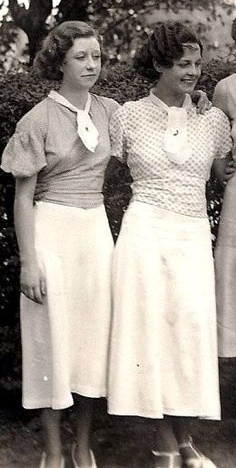
Puff Sleeve Blouses with White Skirts
The other style changes in the mid-1930s involved even more fussy details coming out of the Victorian era. Shirring at the neck, chest and waistband, small pintucks, covered buttons, small and large bow ties at the neck, ties at the waist, round or soft point collars, and ruffle flounces decorated blouses to the max. Popular colors were pink, peach, red, brown, teal, green, light blue, and dark blue.
- 1936 Blouses
- 1936 Skirts and Blouses
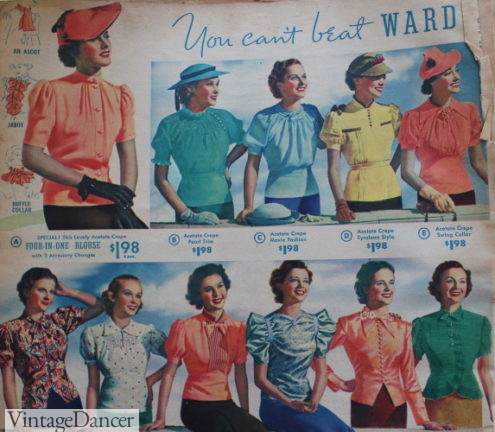
1937 Blouses in Cheerful Colors
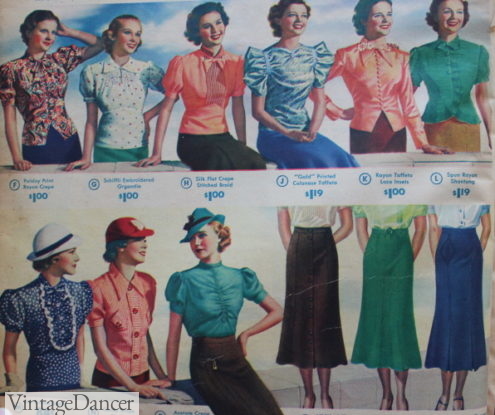
1937 More Blouses and Skirts
Not all 1930s blouses were fussy. The simple utility blouse, service blouse, and polo blouse were modeled after women’s sportswear, which was taken from men’s fashion. The button down blouse made of cotton or rayon had a small point collar and a single chest pocket. Plain colors as well as stripes were the essentials to own. These shirt blouses were hard wearing, yet feminine enough for a world about to go to war.
- 1938 Tailored Blouse
- 1938 Shirred Band Utility Blouse
In 1938 and 1939, there wasn’t much new to add to blouse styles. The same embellishments were still there with even more bright colors and and patterns of vertical stripes, paisley, and plaid.
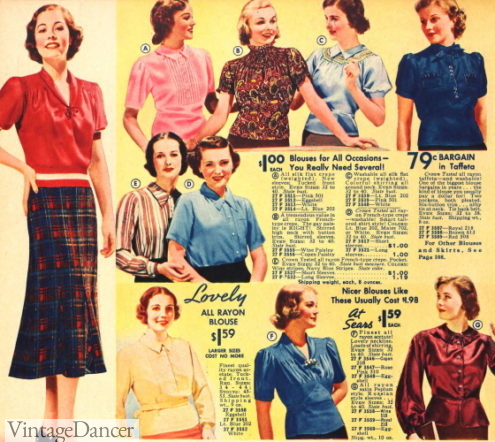
1937 Decorative and Service Blouses
- 1938 Blouses
- 1939 Blouses
One blouse style worth highlighting was the peasant blouse or Hungarian blouse. It was a sheer white blouse with shirring and embroidered flowers. The sleeves and waistband were often shirred as well, giving it that folksy European charm that was increasingly popular throughout the 1930s.
- 1937 Peasant or Hungarian Blouse
- Shirred and Embroidered Peasant Style Blouses
Party Blouses
While the majority of blouses were worn for daywear, a few silky blouses were paired with long skirts for parties and afternoon gatherings. High shine materials echoed the glamorous occasions, paired with equally shiny floor length skirts. Lace blouses, ruffled blouses, sheer organdy, and taffeta fabrics were favorite party blouses.
- Evening or Party Blouses with Sleeves
- 1930s Sleeveless Evening Tops
- 1939 Long Skirt with Ruffled Blouse
- 1939 Midi Skirt and Long Sleeved Afternoon Blouse
Knit Sweater-Blouses
Besides woven fabrics, blouses also came in knits. They were called sweater-blouses because of their close resemblance to sweaters with short sleeves (though they could also have long sleeves). Knitwear was considered more casual than dressy blouses, yet women wore them with both informal and semi-dressy outfits. They were warmer than a long sleeved blouse in winter and more flexible for sportswear in the summer.
Initially, sweater-blouses were knitted in lightweight yarn in the same styles as woven blouses. Neck ties, bows, ruffles, collars, and oversized sleeves were designed for knits. As the decade moved on however, knit tops became simpler, sportier, and more sweater-like. Puff sleeves and a very short length with a wide banded hem were the signature details of 1930s and early 1940s knit tops. Knit patterns could be smooth or textured in intricate patterns. The skills some home knitters had were amazing!
- 1933 Sweater-Blouses and Woven Blouses
- 1939 Knit Tops
- 1935 Short Sleeve Sweater-Blouses, Polo in the Center
- 1934 Puff Sleeve Sweater-Blouses
Shop 30s style vintage sweaters and cardigans.
1930s Polo Shirts
Most short sleeved knit tops did not have collars, save for the small round Peter Pan collar and the point collar. Point collars with a 1/4 button or zip-up neck were sometimes named “polo shirts.” They looked nearly identical to men’s polo shirts — in fact, many women wore men’s polo shirts instead of buying a women’s cut.
Polos could be casual or sporty depending on the design. White polo shirts with skirts or shorts were popular tennis outfits. Blue and white were part of the nautical sailor craze.
- Charming Knit Polo Shirts
- 1937 Sport Polo Shirt
- 1935 Tennis Outfit – Shorts and Zip Up Polo
- Polo Shirt with Culottes
T-shirts
The other style of sporty knit top, again taken from menswear, was the T-shirt. T-shirts were knitted from a fine flat jersey cotton without any embellishment. Stripes were very common T-shirt patterns, at first in long sleeve styles and later for short sleeves. Crew neckband collars and banded sleeves were the only trim. Unlike modern T-shirts, the neckline was very high and they fit quite snug.
- 1931 – A Striped Long-Sleeve Knit Shirt is Almost a T-Shirt
- 1935 Sailor-Striped Shirt with Trousers
- Striped T-Shirt with Sailor Pants
- 1937 Stars and Stripes Sailor outfit and Wide Striped Shirt with Pants
Read More
- Women’s Blouses of the 1920s
- 1930s Women’s Wide Leg Pants
- Authentic 1930s Makeup Guide
- A History of Women’s Sweaters (1910s-1930s)
- 1930s Women’s Shoes History
Shop 1930s Style Tops and Blouses
These blouses, tops and knit T-shirts resemble 1930s women’s vintage tops yet are new and available in a wide range of sizes. Shop here to get started with your women’s 1930s outfit:
Debbie Sessions has been teaching fashion history and helping people dress for vintage themed events since 2009. She has turned a hobby into VintageDancer.com with hundreds of well researched articles and hand picked links to vintage inspired clothing online. She aims to make dressing accurately (or not) an affordable option for all. Oh, and she dances too.
